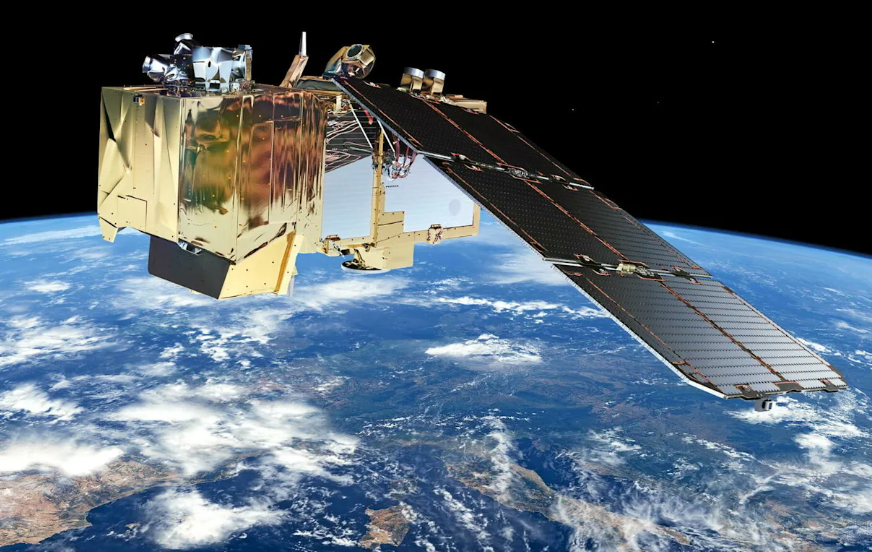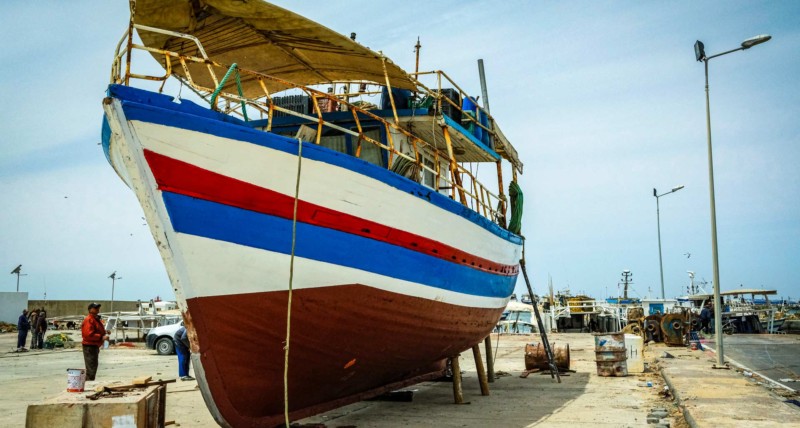The European Space Agency operates a fleet of satellites capable of detecting and identifying polluting ships from space.
During the Third UN Ocean Conference (UNOC3), held in June in Nice, the issue of respecting international ocean protection treaties was at the heart of the debates. Technological advances have opened promising avenues to end impunity on the high seas.
“To enforce the rules, the ‘policemen’ aren’t hard to find: they’re up there—drones and satellites! Today, they see everything, from overfishing to pollution. Within five years, we’ll be able to qualify offenses,” told us Olivier Poivre d’Arvor, France’s Ambassador for the Poles and Oceans.
The European Space Agency (ESA) operates the world’s largest fleet of Earth observation satellites. “Our data can be used to ensure compliance with international treaties,” explains Craig Donlon, Director of Earth Observation Systems at ESA, whom we met in Nice during the One Ocean Science Congress, a scientific gathering of 2,500 researchers held ahead of UNOC3. “If a ship were to empty its tanks at sea, we could see it from space,” he says, “because we can detect hydrocarbon discharges and link them to the ship’s identifier.”
Sentinels in Orbit
ESA’s efforts in Earth observation and ocean protection revolve primarily around the Copernicus program, considered the world’s largest of its kind. A collaboration between the European Union and ESA, it deploys a fleet of Sentinel satellites, each with specific missions to monitor our planet.
Some of the onboard instruments can provide data concerning layers beneath the ocean surface, down to 50 meters below sea level. Among ESA’s satellites, Sentinel-3 plays a crucial role in ocean monitoring with several complementary instruments. It can precisely measure sea surface temperature, analyze sea topography, and study ocean color—an important indicator of ecological health. These data are essential to understanding ocean dynamics and their evolution in the face of climate change.
Sentinel-1 can detect oil slicks, and Sentinel-2 can monitor algae, vital for marine ecosystems. Equipped with altimeters, Sentinel-6C can measure the accelerating rise in sea levels.
This information is key for ocean forecasting, environmental monitoring, and tracking climate change. It also enables precise monitoring of coastal areas, which are especially vulnerable to environmental changes.
This surveillance infrastructure represents a major contribution from Europe to the understanding and protection of the oceans. By providing accurate and regular data on the state of our oceans, ESA empowers scientists to better understand ocean dynamics and decision-makers to take informed actions to protect these ecosystems essential for life on Earth.
The Third UN Ocean Conference (UNOC3) took place in Nice from June 9 to 13, 2025, bringing together 64 heads of state and government as well as 12,000 delegates. It was preceded by the One Ocean Science Congress, a conference with which “Le Point” was a partner, gathering 2,500 scientists worldwide from June 3 to 6, 2025, and issuing 10 recommendations to diplomats preparing to negotiate the Nice agreement. The first ocean health barometer, named Starfish, was published on June 8, 2025, and will be updated annually.
Source: lepoint



